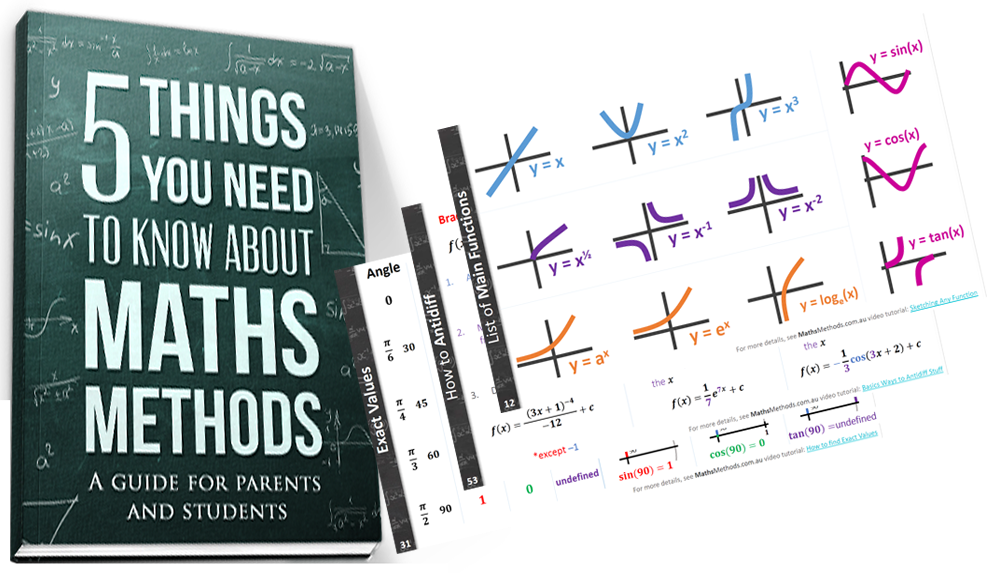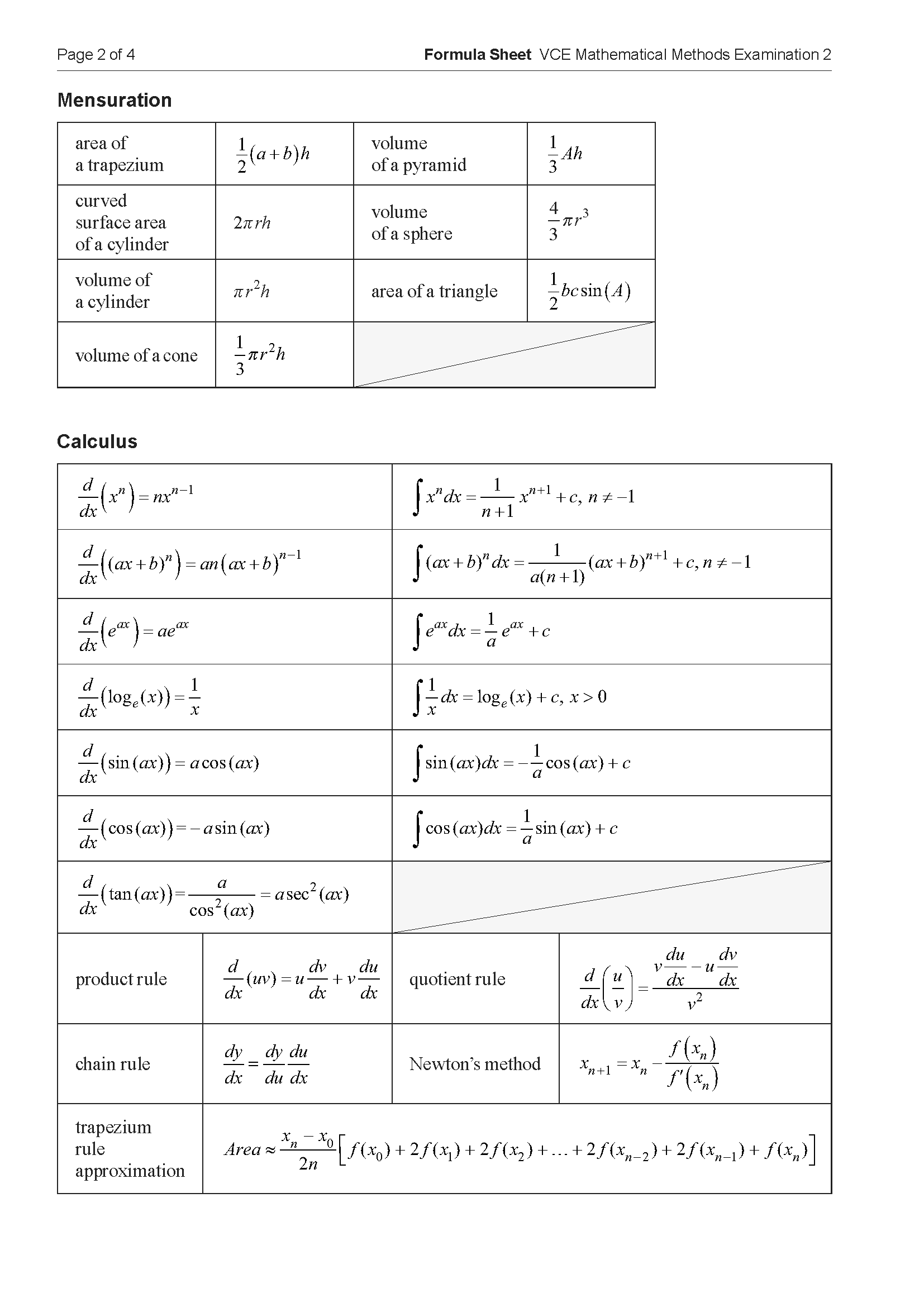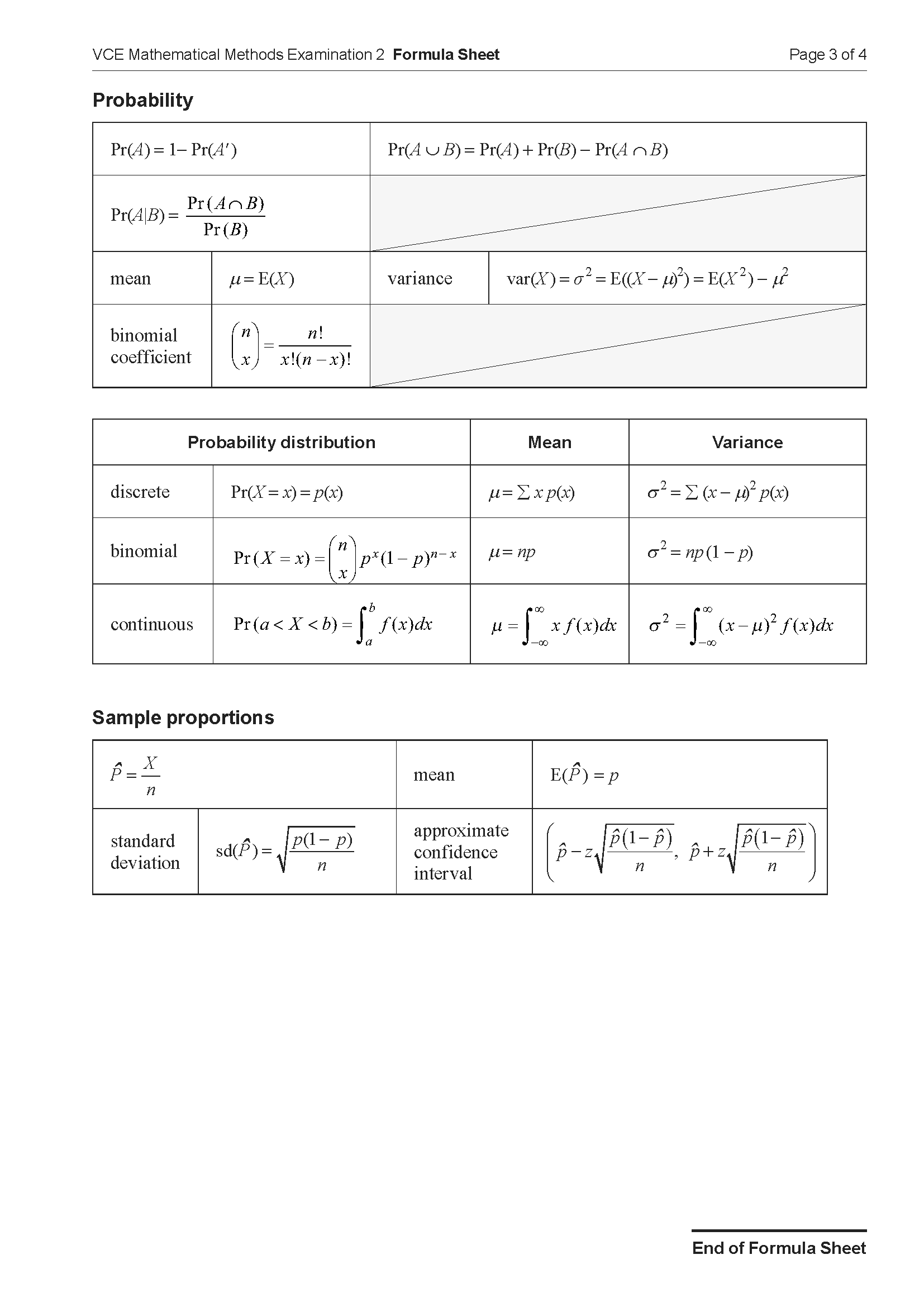VCE Methods Probability Application Task 7
Number of marks: 17
Reading time: 3 minutes
Writing time: 25 minutes
Section B – Calculator Allowed
Instructions
• Answer all questions in the spaces provided.
• Write your responses in English.
• In questions where a numerical answer is required, an exact value must be given unless otherwise specified.
• In questions where more than one mark is available, appropriate working must be shown.
• Unless otherwise indicated, the diagrams in this book are not drawn to scale.
The Lorenz birdwing is the largest butterfly in Town A.
The probability density function that describes its life span, \(X\), in weeks, is given by
\(f(x) = \begin{cases} \frac{4}{625}(5x^3 - x^4) & 0 \le x \le 5 \\ 0 & \text{elsewhere} \end{cases}\)
a. Find the mean life span of the Lorenz birdwing butterfly. 2 marks
b. In a sample of 80 Lorenz birdwing butterflies, how many butterflies are expected to live longer than two weeks, correct to the nearest integer? 2 marks
c. What is the probability that a Lorenz birdwing butterfly lives for at least four weeks, given that it lives for at least two weeks, correct to four decimal places? 2 marks
The wingspans of Lorenz birdwing butterflies in Town A are normally distributed with a mean of 14.1 cm and a standard deviation of 2.1 cm.
d. Find the probability that a randomly selected Lorenz birdwing butterfly in Town A has a wingspan between 16 cm and 18 cm, correct to four decimal places. 1 mark
e. A Lorenz birdwing butterfly is considered to be very small if its wingspan is in the smallest 5% of all the Lorenz birdwing butterflies in Town A.
Find the greatest possible wingspan, in centimetres, for a very small Lorenz birdwing butterfly in Town A, correct to one decimal place. 1 mark
Each year, a detailed study is conducted on a random sample of 36 Lorenz birdwing butterflies in Town A.
A Lorenz birdwing butterfly is considered to be very large if its wingspan is greater than 17.5 cm. The probability that the wingspan of any Lorenz birdwing butterfly in Town A is greater than 17.5 cm is 0.0527, correct to four decimal places.
f.
i. Find the probability that three or more of the butterflies, in a random sample of 36 Lorenz birdwing butterflies from Town A, are very large, correct to four decimal places. 1 mark
ii. The probability that \(n\) or more butterflies, in a random sample of 36 Lorenz birdwing butterflies from Town A, are very large is less than 1%.
Find the smallest value of \(n\), where \(n\) is an integer. 2 marks
iii. For random samples of 36 Lorenz birdwing butterflies in Town A, \(\hat{P}\) is the random variable that represents the proportion of butterflies that are very large.
Find the expected value and the standard deviation of \(\hat{P}\), correct to four decimal places. 2 marks
iv. What is the probability that a sample proportion of butterflies that are very large lies within one standard deviation of 0.0527, correct to four decimal places? Do not use a normal approximation. 2 marks
g. The Lorenz birdwing butterfly also lives in Town B.
In a particular sample of Lorenz birdwing butterflies from Town B, an approximate 95% confidence interval for the proportion of butterflies that are very large was calculated to be \((0.0234, 0.0866)\), correct to four decimal places.
Determine the sample size used in the calculation of this confidence interval. 2 marks
End of examination questions
VCE is a registered trademark of the VCAA. The VCAA does not endorse or make any warranties regarding this study resource. Past VCE exams and related content can be accessed directly at www.vcaa.vic.edu.au


